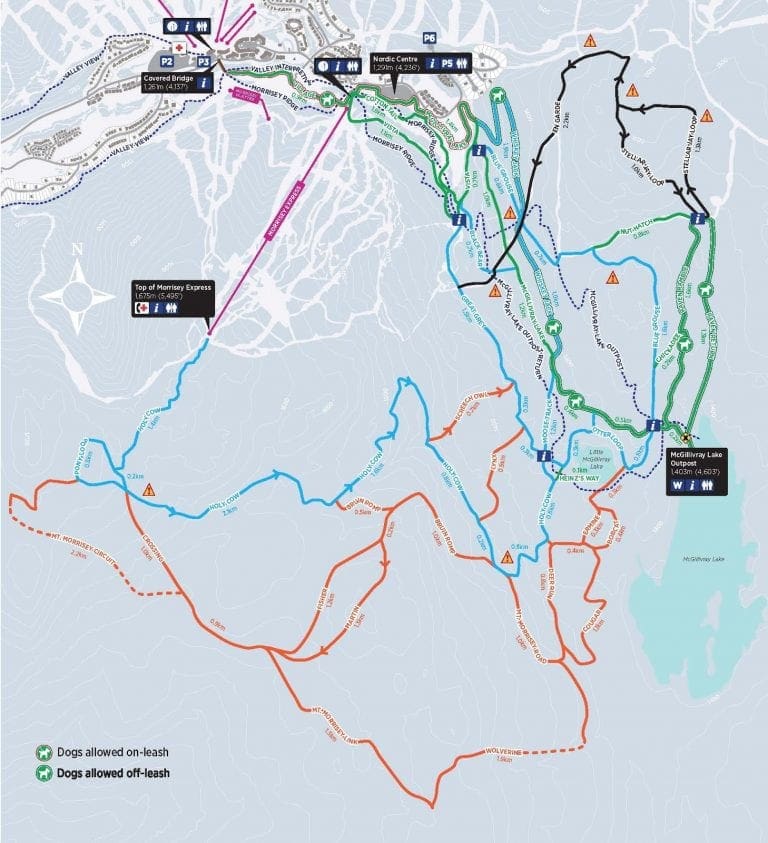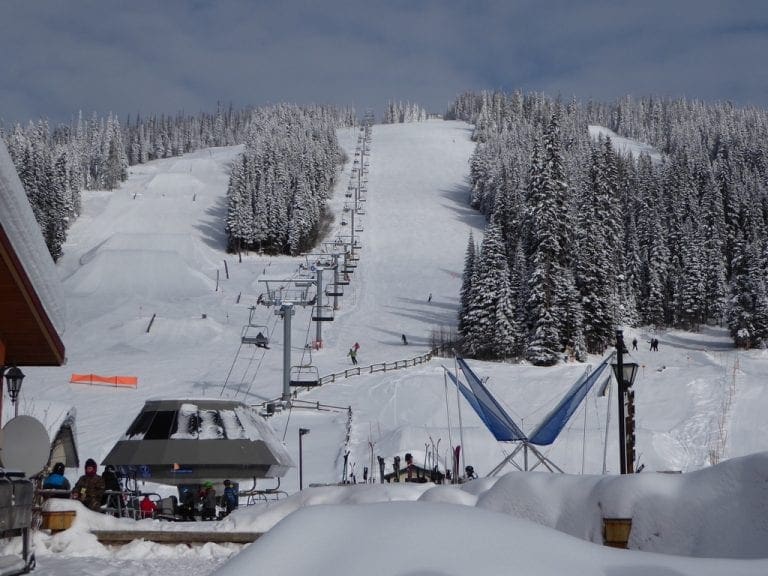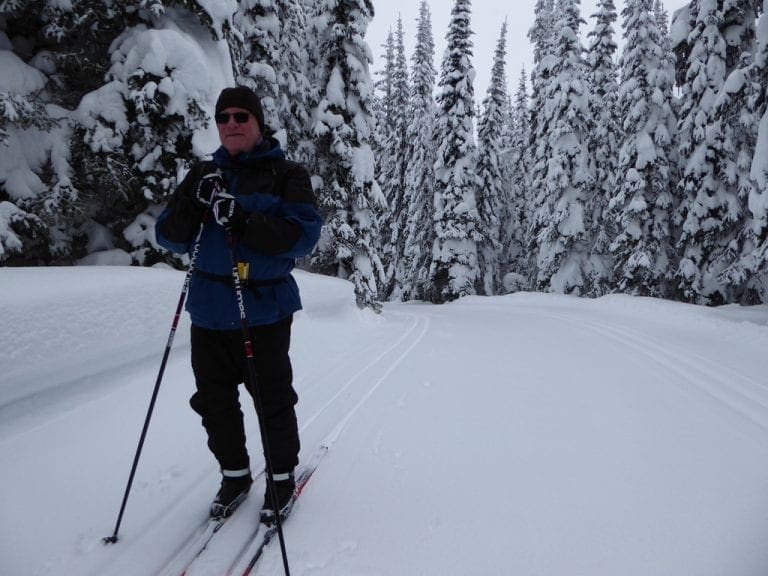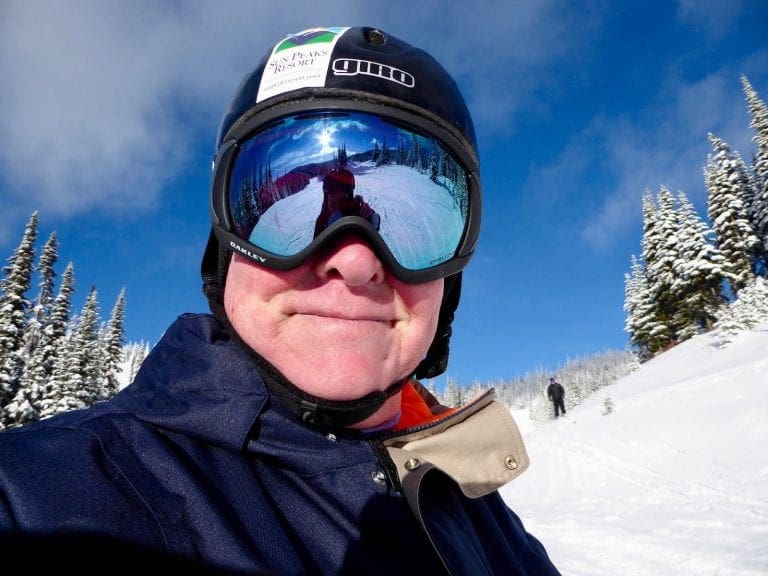Sun Peaks trip 2018 – Week 2
 |
| Top of Sunburst Lift |
Wednesday 24 Jan 2018. Skied 6 runs, 2:30 hours, 2,800 descent, max speed 42.2kph, recovery 30 hours. Very cloudy on Tod Mountain so not too many skiers went on Sunburst lift. We were at the lift line in time to see first people on the lift at 8:30. About 5 cm of fresh powder snow on top of grooming. Delightful. I’m getting my ski legs back. First, we skied twice down Sundowner with fresh tracks. Then, once down Homesteader which is a delightful cruise. Our confidence was so high, we tackled Sundance next but I did not do so well in its chopped up conditions – a fall in the moguls on the first fall line, which I have seldom liked. Back to Homesteader for a couple of cruising runs to recover our wah. Back home for an outside hot tub.
 |
| Top of Elevation chair from top of Sunburst |
Thursday 25 Jan 2018. Skied 7 runs, 2:45 hours, 3,475 descent, about 18km distance, 44.1kph, recovery 19 hours. Sunny day. We began with twice Granny Greenes which had 5cm of new snow on the grooming. Then Homesteader, Sundowner (which was getting a bit choppy but was still a good run), another Homesteader (which is excellent cruising), then twice down 5 mile which is delightful cruising with untouched grooming most of the way down on skiers left.
Friday 26 Jan 2018. Our longest day yet – 8 runs. Two down Granny Greenes (where we had first tracks through 3cm on new snow on top of beautiful grooming), one Homesteader, five times down Cahilty/5 Mile. A great day. We got up a bit early and were the 4th chair to load. 3:07 hours, 22.5km, 4,310m descent, max speed 46.2 kph, recovery 34 hours.1,187 kcals. The first 3 runs down the 5 mile, my heart rate did not get above the normal rate for just ‘standing up’. Able to point the skis much further downhill and not working so hard in the turns. First runs down Granny Greenes were the pick of the day, though the first three down Cahilty/5 mile were pretty awesome.
 |
| Cahilty Hotel from top of ski stairs Our room circled |
Saturday 27 Jan 2018. A day off. It snowed all morning, sometimes quite heavily. Visibility about 200m. It snowed steadily all day. By 3.30pm we had 28cm. We can sit and look out at skiers at the bottom of the runs and along the lower arm of Gentle Giant. A good day for us to take off. It is very tiring to ski in such soft, deep snow.
Sunday 28 Jan 2018. Another day off for me. When we got up at 7am, it was snowing again. My right knee will not stand up to new snow. Helen went out for four runs – two Granny Greenes and two 5 Miles.
 |
| Winch groomer on Exhibition |
Monday 29 Jan 2018. Cloudy day and the ‘f-word’ on the mountain. The f-word is of course ‘fog’. We joined the lift early and were on the 5th chair. Very keen to be first of the new grooming. Granny Greenes here we come. But . . ., 3cm on new wet snow had fallen on the grooming and the visibility was just a few metres. Not a good run. Ok, let us try Homesteader. The grooming was excellent, but the visibility getting worse on each run. I gave it away after a second run down Homesteader. Helen did another before also abandoning. The mountain was socked in all day. The first time that we have seen that happen.
 |
| Sun Peaks Elementary School Top of Platter |
Tuesday 30 Jan 2018. Cloudy at the top of Sunburst – so we did not go there. Seven runs down Homesteader. Very enjoyable. 2:30 hours, 39.72km (including 14km of lift rides), 3,270m descent, 44.8kph, recovery will be 28 hours. Top to top was taking us just 21 minutes including the 7min lift ride. A few years ago, I would have been very scornful of just skiing down Homesteader, now, I enjoy it. The last couple of runs, my heart rate stayed at the standing/gentle walking level. Just letting the skis do the work and cruising down. Wonderful.













